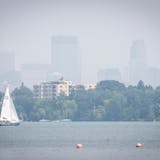Opinion editor's note: Editorials represent the opinions of the Star Tribune Editorial Board, which operates independently from the newsroom.
•••
After decades of fits and starts, the Northern Lights Express could, at last, provide regular passenger service between the Twin Cities and Duluth within a few short years.
That would be welcome news for several reasons. It would further connect two distant parts of the state, putting day trips within reach of those who may or may not have access to a car. It would infuse new life into the Duluth economy, and make it easier for northern Minnesotans to plan outings to the metro.
This is not a commuter train like the Northstar line between downtown Minneapolis and Big Lake. But it is expected to run four times daily with tickets costing $30 to $35 one-way. Traveling at speeds up to 90 mph, the train is expected to cover the distance — including stops at Coon Rapids, Cambridge and Hinckley and Superior, Wis. — in 2.5 hours.
There have been and will be naysayers. Those who complain that the train takes even longer than driving on a good day. That the ticket price is more than most motorists would pay for gas.
Both true. But just try taking Interstate 35W during peak cabin season on any given long weekend or in the months of horrific road conditions known as a Minnesota winter. Try finding a weekday in good weather when parts of the interstate aren't narrowed to one lane from never-ending construction. Our guess is it won't be long before Tobies in Hinckley sells its famed caramel rolls to train passengers at everybody's favorite halfway point.
But there are other reasons to be excited about the resumption of train service to the North Shore. Train travel was once a regular feature of life in Minnesota. It should be again. It has been 38 years since Amtrak discontinued service to Duluth. A resumption of that service would put Minnesota closer to widening transportation options beyond the car culture that has dominated the state for too long.


